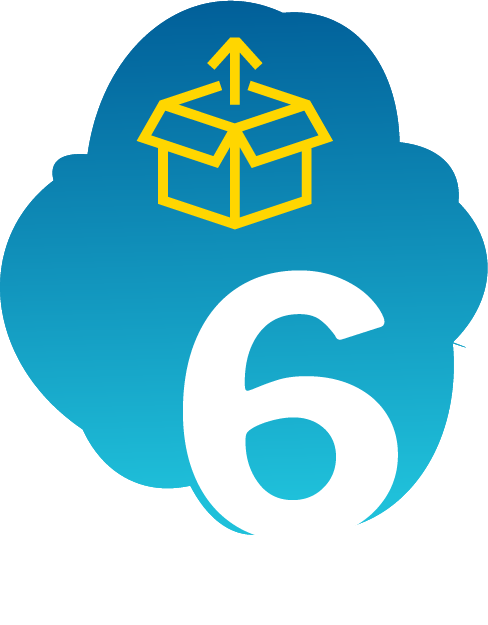Creating Undeniably Great Customer Experiences in an Uncertain World
The need to create and deliver a great customer experience is as old as commerce itself. Brands have wanted to appeal to the likes of potential customers for years – decades, even. In fact, in the early 20th century, that market research emerged as a means of testing and improving advertising based on public feedback. Since then, we haven’t looked back.
The desire to create and deliver great customer experiences has only increased in importance, as leaders can track how a happy customer becomes a loyal one. Customer loyalty is a reward for a well-designed and well-deployed customer experience.
But what happens when everything shifts – when customers’ basic habits, behaviors, and needs change without warning? When the winning experience you created and delivered yesterday doesn’t apply today? When your organization must pivot to create an exceptional customer experience in an environment rife with new challenges, including:
-
Limited face-to-face interactions
-
Employees who must now work from home (WFH)
-
An unprecedented need to instill health and safety regulations
-
Urgency to adopt technologies – both consumer-facing and internal
-
Customers with different beliefs on the need to wear masks in public
In short, the list of things to consider when developing a CX strategy for today’s world is long. But don’t get discouraged. CX is still the only durable competitive advantage, and it is changing at the pace of the marketplace – which is faster than ever.
A recent Harvard Business Report article said it best: “Retailers need to stop expecting business to return to ‘normal.’ There’s no going back to how it was anytime soon.”
The reality is that we have a “before” COVID-19 and an “after.” We can’t assume that the way we did things in the “before” will work in the “after.” It’s time to think differently and act boldly.
Eight Steps to Outstanding CX in a Rapidly Changing World

Create a team of opportunity scouts.
It’s been said many times: Strategy without execution is meaningless, and the only way to successfully activate your strategy is through your people. So don’t simply inform employees of the new CX and hope for the best.
Instead, include them in strategy development as “opportunity scouts.” The folks on the front line undoubtedly have great ideas that the C-suite is unlikely to consider. Tap into your people. Encourage them to look out for, surface, and share ideas – even “risky” ones. This collective thinking will iterate into the next great idea. Opportunity scouts are important to your CX because engaging people in the game plan makes them care more about their jobs, which directly translates to happier customers.
Leaders, it’s important to remember that as you express commitment to your customer’s experience, you also must demonstrate your dedication to the employee experience. Your people must know that the customer isn’t the only audience you care about, because your customer’s experience will never exceed your employee’s.
Prioritize health and safety above all else.
Organizations that establish new rules to create the safest environments for their people and customers will win in the end. Not all customers will like adhering to new recommendations and might take their business elsewhere, but brands that take a stand by erring on the side of safety will ultimately fare best. When it comes to CX in the COVID-19 era, this is a must for the sake of long-term brand perception to sustain and grow employee and customer loyalty.
Showing commitment to health and safety requires more than enforcing mask-wearing mandates. Everyone, internally and externally, must have a clear understanding of the brand’s positioning. They must feel confident in what the brand is asking.
Leaders, whatever you ask of your people and your customers, you must do too. For example, if there’s a staff mask-wearing policy, it should include you too. Additionally, you must follow up on any corporate mask policy announcements by hanging signs and placing visual cues in your store to remind everyone – employees and customers alike – about the organization’s positioning. But don’t stop there. Reinforce the message on your store’s website and social media platforms too, if you have them.


Create a compelling story for new technology.
Today, audiences expect a seamless, blended digital and human experience. This requires investment in new customer-facing technology and a focus on ensuring that employees adapt to digital change and new ways of working. Many technology investments designed to elevate the customer experience fail simply because employees didn’t embrace them.
There’s a common narrative that companies introduce technological innovations to “bypass” a human connection, but many new customer-facing technologies are shifting the employee’s role rather than replacing it. So when a customer’s experience is technology enabled, the employee role must adapt accordingly, knowing that the employee still plays a role in the overall CX.
A lot of organizations do a bad job of controlling that narrative, leaving employees confused about their role and possibly even concerned about their jobs. This can lead to employees resisting the technology, which can have a knock-on effect on customer engagement.
Leaders must make sure they’re telling a compelling and consistent story about their new technology and ensure they take the business, employee, and customer perspectives into consideration. Telling employees, “This will be the best thing since sliced bread!” won’t work. Be authentic and make sure employees’ concerns are addressed. Be honest and open about the necessity to change and how employees may need to change their routines and behaviors in the new CX landscape. Your customer’s experience can only be elevated by new technology if your employees are on board.
Dedicate more time than ever before to your managers.
It’s been proven that managers are often the most overlooked and under trained demographic in the workplace. But they are actually the most critical, as they are the conduits of information between upper management and front-line workers (you know, the folks actually bringing the business to life). Whether or not you dedicated time and resources to this extraordinarily important group before COVID-19 is irrelevant, because almost everything has changed.
Today, your managers face a whole new set of challenges and obstacles. It’s critical to help them understand their role in this new world. If they don’t know your new health and safety protocols inside-out, how will they be able to lead their teams through these changes? From learning how to coach their teams on having uncomfortable conversations with disgruntled customers to being the on-site de-escalation expert for their store, managers now need support more than ever.


Educate, engage, and support the front line.
When it comes to new health and safety guidelines, front-line teams must be 100% clear on hardlines, guidelines, and no-lines.
Is your front line encouraged to “act like owners”? Do they have the confidence and knowledge to make real-time decisions to create the best CX? Do they have freedom to kindly escort customers who don’t comply with guidelines out of the store? Are they ready to stop unhappy customers from creating disturbances? Do they have free masks to give to customers who show up emptyhanded? Are there sanitation stations set up throughout the store that serve as visual cues to all internal and external audiences?
It’s also important to consider what type of de-escalation training your business needs to invest in, as teams dealing face to face with customers need the skills and knowledge to safely mitigate issues with potentially frustrated shoppers.
Ensure in-store experiences are out of the box.
Consumers aren’t shopping or dining away from home like they were at the start of 2020. So what can you do? Make your in-store CX unique and make them want to come in.
The Harvard Business Review suggests taking inspiration from Cinépolis, a luxury movie theater that created such an inviting in-person experience that people wanted to leave their comfy couches and Netflix accounts for a night. The article states that the experience Cinépolis created “didn’t simply improve what had been previously offered to customers and address the shortcomings of existing options. They made visiting a theater better than watching at home.” While we’re all watching more movies at home, the point is that brands must think outside the box and come up with new ways to entice people out of their homes and into their retail locations.
A recent blog post by customer service platform Acquire tells us that “35% of consumers say an enjoyable in-store experience would make them more likely to shop with a retailer, and 30% say it would make them more likely to purchase more. Over a third also noted they would be more likely to shop with a brand or retailer that is associated with fun experiences.” So, yes – the digital work is a priority now, but organizations can’t overlook the potential in creating the right in-person experience.


Enhance customer service.
Digital Commerce 360 tells us that online sales this June were up 76% over June 2019. With more people shopping online, customer service teams are working overtime. Even in-store shopping today can create more work for customer service teams, as folks making in-person purchases are likelier to call or email with questions – they don’t want to make any unnecessary trips to the store. This means organizations must put more energy into their customer service teams and contact center partners.
If you’re not sure where to start, consider the skills CX teams need in the “new normal” and focus there. For example, the COVID-19 pandemic has left many consumers feeling stressed, frustrated, and anxious. Do customer service agents and in-person front-line teams need to be refreshed on listening or empathy skills? Do employees know how to project friendliness and be welcoming over the phone or when their smiles are obscured by face masks? The B2C world is very different right now – so new skills and capabilities must be put into play.
Finally, focus on your employees first.
If your people were already feeling stressed before COVID-19, their anxiety levels reached new heights in 2020. Society has fallen into a new rhythms, some of which we know. We know how to navigate the world of in-person shopping. We know which restaurants offer curbside pick-up and which have socially distanced outdoor dining. But many people are still struggling.
Think about parents working from home while also overseeing their children’s digital learning, while no longer having day camps or childcare to rely on. Leaders, your working parents are facing issues they’ve never encountered before. Of course, it’s not just this group feeling stressed. Your entire employee population is stressed. They’re worried. They’re fearful. And this combination of emotions is never good for business. When people focus on the unknown and stress takes over, they can’t give their full attention to the task at hand.
Leaders must focus on engaging people in the big picture with honesty and empathy. They must check in with their people on more often, whether by phone, email, text, or video chat. If an employee’s child is crying in the background during a Zoom meeting, let them know it’s okay. And always reward and recognize people’s successes. The wins might look different right now, but celebrating is more critical than ever.

Act Now, Act Fast, and Act Strategically
Yes, creating a winning CX in the wake of COVID-19 is an unnerving task. But it’s never been more important. A recent Forbes article tells us that if customer service fails, 70% of customers are willing to walk away. However, it doesn’t have to be that way for your business. An even greater percentage of customers (74%) will choose to spend more on products and services if the customer experience is better.
It begins by committing to addressing the current needs of customers and society as a whole, and ensuring your CX is better than the rest. But it’s not just about building exceptional CX for right now – it’s about crafting a strategy that positions your CX to be a leader of the pack in the future (with whatever constraints we’re facing then, too).
Going from pre-COVID to post-COVID will require significant cultural change that should not be underestimated. So let’s get to it.







